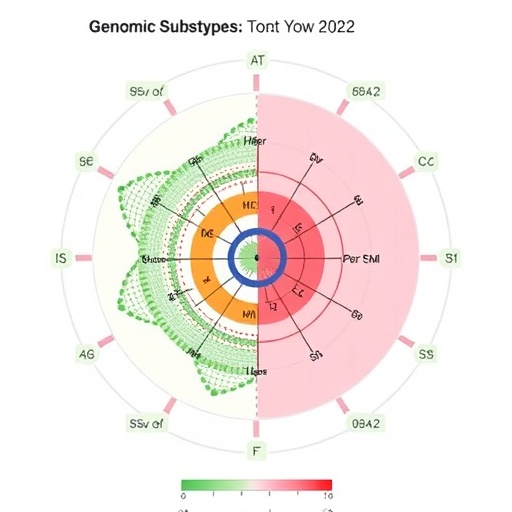The challenge of overcoming resistance mechanisms in advanced non-small cell lung cancer (NSCLC) has been a persistent focus in thoracic oncology. Osimertinib, a third-generation epidermal growth factor receptor (EGFR) tyrosine kinase inhibitor (TKI), has emerged as a cornerstone in treating EGFR-mutated NSCLC. However, the inevitable development of resistance mechanisms, such as acquired oncogenic fusions, presents significant hurdles in maintaining long-term therapeutic efficacy. Recent insights into the combination of Osimertinib and Selpercatinib offer a promising avenue to address these challenges, as highlighted in a case involving an elderly patient with advanced stage IVB EGFR-mutated NSCLC.
The 78-year-old female patient presented with a primary lesion in the left upper lobe of the lung, accompanied by satellite nodules, mediastinal adenopathy, and extensive bone metastases. Initial diagnostic workup, including a CT-guided lung biopsy, confirmed the presence of an activating EGFR exon 21 (L858R) mutation. She was started on Osimertinib monotherapy (80 mg daily) after surgical stabilization of a pathological fracture and palliative radiotherapy. The patient’s disease remained controlled for an impressive 28 months before progression, evidenced by a malignant pleural effusion and pleural metastases.
At the time of progression, a rebiopsy during video-assisted thoracoscopic surgery (VATS) revealed an acquired CCDC6::RET fusion alongside the original EGFR mutation. This novel resistance mechanism represented an EGFR-independent pathway, underscoring the complexity of Osimertinib resistance. The addition of Selpercatinib, a selective RET inhibitor, to her treatment regimen demonstrated a remarkable clinical benefit, achieving 14 months of progression-free survival (PFS) without adverse events. However, subsequent disease progression with new metastases and pericardial effusion ultimately led to a transition to best supportive care.
The case underscores the critical importance of rebiopsy in identifying targetable resistance mechanisms in NSCLC. Rebiopsy allows clinicians to tailor treatment strategies to evolving genetic landscapes, thereby improving patient outcomes. The discovery of the CCDC6::RET fusion in this case exemplifies the utility of molecular profiling in guiding precision medicine. RET fusions, although rare, are increasingly recognized as actionable targets in the context of acquired resistance to EGFR-TKIs.
Osimertinib’s role as a first-line therapy for advanced EGFR-mutated NSCLC has revolutionized treatment paradigms. It achieves irreversible binding to the EGFR tyrosine kinase domain and demonstrates superior efficacy in addressing T790M-mediated resistance to earlier-generation TKIs. Despite its efficacy, resistance mechanisms invariably emerge, with oncogenic fusions such as RET, ALK, and ROS1 representing key pathways. These fusions bypass EGFR dependence, driving tumor progression through alternative signaling routes.
Selpercatinib’s addition to the therapeutic arsenal marks a significant advance in addressing RET-mediated resistance. This RET-selective inhibitor has shown efficacy in various settings, including primary RET-driven malignancies and resistance contexts like the one described here. The combination of Osimertinib and Selpercatinib represents a rational therapeutic strategy to simultaneously target EGFR mutations and RET fusions, providing a dual blockade of critical oncogenic drivers.
This case contributes to the growing body of evidence supporting combination therapies in overcoming acquired resistance. In a multicenter study, dual treatment with Osimertinib and Selpercatinib demonstrated an objective response rate of 50% in patients with EGFR-mutant NSCLC and acquired RET fusions. Median PFS in such cohorts has been reported at approximately 7.4 months. Comparatively, the 14-month PFS observed in this patient suggests a potentially synergistic effect of this combination in specific genetic contexts.
The patient’s clinical course also highlights the tolerability of combined EGFR and RET inhibition. Adverse events associated with such therapies have typically been mild and manageable, including rash, hypertension, and transaminitis. In this case, the absence of significant toxicity allowed for prolonged treatment, maximizing therapeutic benefit. However, challenges remain in characterizing resistance mechanisms at subsequent progression points, as evidenced by the lack of rebiopsy at the final progression in this patient.
The heterogeneity of resistance pathways in NSCLC underscores the need for ongoing research to refine combination strategies. Mechanisms such as RET solvent front mutations and MET amplifications may emerge under selective pressures from targeted therapies, necessitating adaptive treatment approaches. The potential for polyclonal resistance, wherein multiple pathways co-contribute to tumor progression, further complicates treatment.
Future directions in managing Osimertinib resistance include the development of sequential and combination regimens tailored to specific resistance mechanisms. For example, integrating RET inhibitors like Pralsetinib or multikinase inhibitors such as Cabozantinib may offer additional therapeutic options. Moreover, incorporating liquid biopsy techniques for real-time monitoring of molecular evolution could enhance the precision of resistance management.
The presented case exemplifies the paradigm shift toward personalized medicine in NSCLC. By leveraging molecular insights, clinicians can optimize treatment strategies, improving both survival and quality of life for patients. The durable response achieved with Osimertinib and Selpercatinib underscores the potential of combination therapies to address unmet needs in thoracic oncology. As research advances, these approaches are poised to further transform the landscape of NSCLC treatment, offering hope for patients facing complex resistance mechanisms.
Subject of Research: Resistance mechanisms in advanced EGFR-mutated non-small cell lung cancer
Article Title : An acquired CCDC6::RET gene fusion as resistance mechanism for Osimertinib in exon 21 EGFR(L858R)-mutated non-small cell lung cancer and its successful management with Osimertinib and Selpercatinib: a case report and review of literature
News Publication Date : 05 January 2025
Article Doi References : https://doi.org/10.1080/1120009X.2024.2445909
Keywords : Non-small cell lung cancer, EGFR-mutation, RET-fusion, Osimertinib, Selpercatinib





